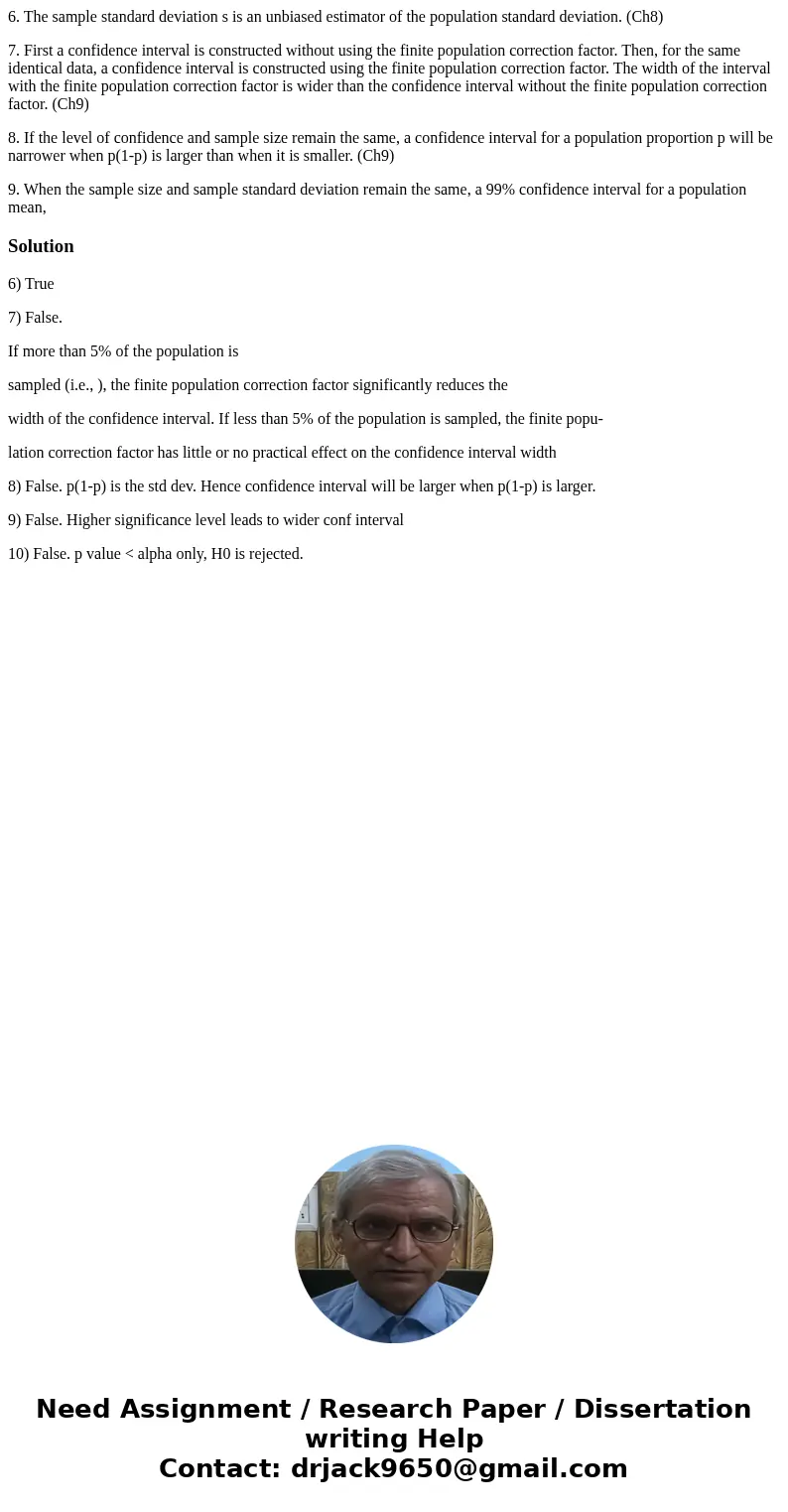6 The sample standard deviation s is an unbiased estimator o
6. The sample standard deviation s is an unbiased estimator of the population standard deviation. (Ch8)
7. First a confidence interval is constructed without using the finite population correction factor. Then, for the same identical data, a confidence interval is constructed using the finite population correction factor. The width of the interval with the finite population correction factor is wider than the confidence interval without the finite population correction factor. (Ch9)
8. If the level of confidence and sample size remain the same, a confidence interval for a population proportion p will be narrower when p(1-p) is larger than when it is smaller. (Ch9)
9. When the sample size and sample standard deviation remain the same, a 99% confidence interval for a population mean,
Solution
6) True
7) False.
If more than 5% of the population is
sampled (i.e., ), the finite population correction factor significantly reduces the
width of the confidence interval. If less than 5% of the population is sampled, the finite popu-
lation correction factor has little or no practical effect on the confidence interval width
8) False. p(1-p) is the std dev. Hence confidence interval will be larger when p(1-p) is larger.
9) False. Higher significance level leads to wider conf interval
10) False. p value < alpha only, H0 is rejected.

 Homework Sourse
Homework Sourse